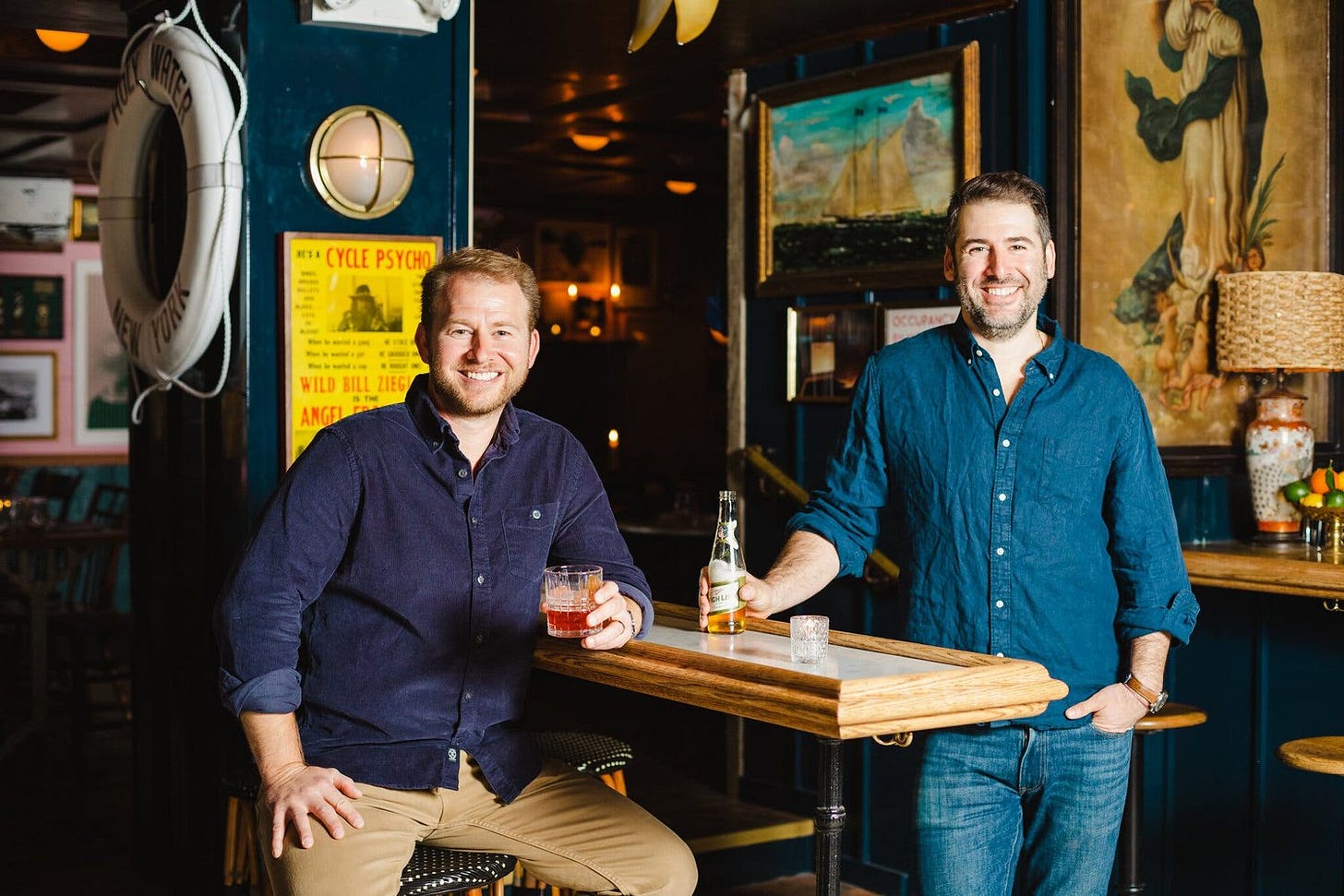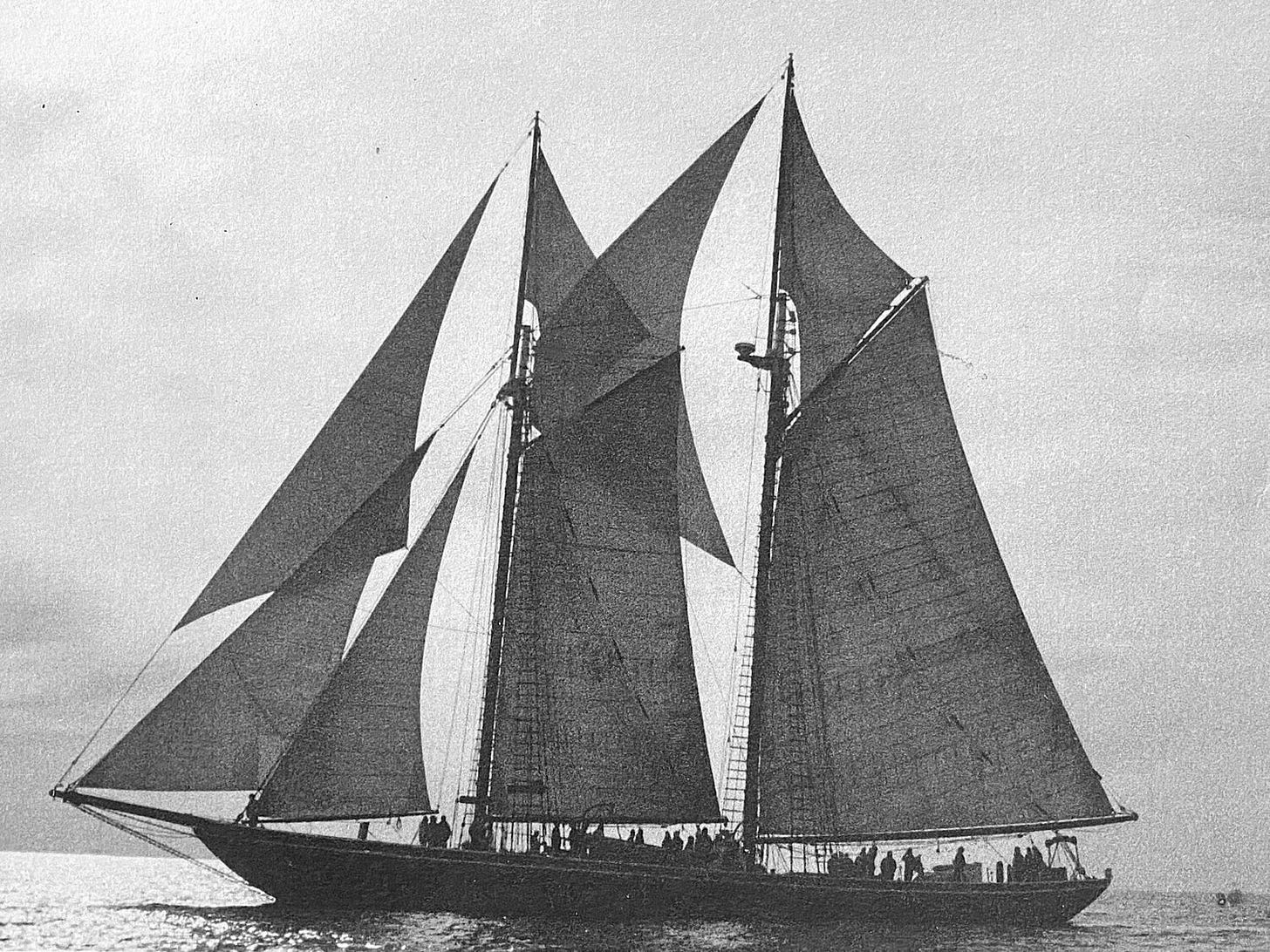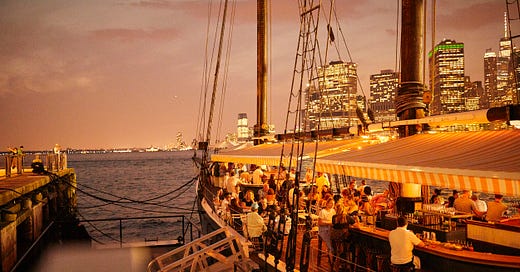Pilot | Brooklyn, NY
Set aboard an 147-foot wooden schooner, Pilot, named after the ship itself, is a seasonal oyster bar moored at Brooklyn Bridge Park’s Pier 6.
In this series, I’m calling out a few of my all-time favorite restaurants. With a keen interest in the people behind each venture, I’m sharing what got the founder started and why they stayed, how the restaurant approaches sustainability across its food and design, and how each restaurant’s design details craft and enhance the dining experience.
Set aboard an 147-foot wooden schooner, Pilot, named after the ship itself, is a seasonal oyster bar moored at Brooklyn Bridge Park’s Pier 6. Pilot is one of seven ventures of hospitality group Crew NY founded by brothers Alex and Miles Pincus.
A Brooklyn local myself, I often pass Pilot on runs around the Brooklyn Bridge Park piers. On any given New York summer evening, Pilot beckons with a charm that can’t help but stir a yearning from passerbys. Maybe just one drink!
I’ve eaten at Pilot only once, at the bow of the ship on a clear, balmy New York summer night — the kind of night the restaurant was built for. With my parents, granddad, and uncle, we made our way down the shaky ramp that leads to the boat and ate and drank our way through a bottle of rosé, lobster rolls for each, and tins of fries. One order of fries soon turned to three as we watched the sun set across the summer skyline and boats — of every shape and size — pass through the East River. A summer night for the books!
Pilot’s Story
The Brothers
Alex and Miles Pincus grew up in New Orleans, fully immersed in the hospitality industry. “My father was (and still is) a hotel manager in New Orleans, so I grew up seeing hospitality in action. In the ‘80s he ran one of New Orleans’ most popular restaurants, The Rib Room, and I certainly absorbed a lot of how things should be, just by being there” Alex told Tock in an interview.
Crew NY, the hospitality group behind Pilot, began with a birthday party hosted by the Pincus’s aboard a tourist sailboat. When unexpectedly a couple hundred people showed up (friends invited friends, and friend’s friends invited more), the boat was too full to set sail. They ended up having the party on the docked boat.
“It got us thinking about how we could put a boat somewhere and just hang out. This was the seed of a thought that sat with us for a few years and that we kicked around without a clear concept” they told Squarespace.

The Boat
Pilot, the boat, was originally commissioned in the twenties by an American syndicate to race Bluenose, a Nova Scotia schooner which had established a worldwide reputation as the fastest sailboat at the time.
Just as Pilot neared completion in 1924, the International Fisherman’s Cup was called off and Pilot was purchased by the Massachusetts’ Pilots’ Association. During the Second World War, Pilot served with the United States Coast Guard where she moved troop transporters, freighters, and tankers, across over 13,000 trips. Pilot served for over fifty years before she was sold in 1976, making her the longest-serving pilot boat in American history. Later, she served as a research vessel and educational ship, where she sailed around the world twice.
After exchanging hands a few more times, Miles and Alex — both lifelong sailors — came across Pilot. “We’re always kind of hunting around for boats, and my brother saw something somewhere about this in a marina in Gloucester,” Alex said in an interview for Women’s Wear Daily, “It was covered in tarps and falling apart, but I just kept thinking about it. After a while I started to realize it was this beautiful gem hidden under decay.”
The brothers purchased Pilot in 2015, fully restoring and converting her to the oyster bar it now is. Pilot maintains three-quarters of her original construction materials.

Sustainability at Pilot
Alex and Miles have built Pilot — as well as their other ventures — with a strong focus on sustainability across their operations.
Seafood sustainability is core to the restaurant’s values.
In the 18th and 19th centuries, Manhattan’s shores were lined with hundreds of floating “oyster bargies.” After oysters were loading from boats to the barges, they were packed into barrels, shucked, and canned either to be shipped or sold directly to local vendors. Oysters were in fact a primary food source for many New Yorkers – rich and poor, alike. Indeed, oysters were so abundant that the shells were used to pave streets (the origin of the name Pearl Street). (If you’re curious about the history of oysters in New York, I highly recommend giving this a read).
Rapid urbanization and industrialization in the late 19th century polluted New York’s oyster beds, damaging the oyster population. When several outbreaks of typhoid fever and cholera were linked to polluted oyster beds, the City Health Commissioner closed all of New York Harbor’s oyster beds in 1927.
The Billion Oyster Project, of which both Alex and Miles sit on the board of directors, is working to restore New York’s reefs. The organization operates under the thesis that one oyster can filter up to 50 gallons of water per day. The organization estimates that one billion oysters would be able to filter the entire New York harbor in three days.
Moreover, Kerry Hefferman, Crew’s culinary director and internationally acclaimed chef, known for opening Eleven Madison Park as Executive Chef, is passionate advocate for seafood sustainability. “Eat what the sea gives us,” he told Restaurant Hospitality in an interview, “So if you go out fishing and you can’t catch striped bass, but you’re catching sea robin, let’s learn to make the sea robins taste good.” Through his efforts, Crew began an industry-wide campaign against serving striped bass and other species at risk. Pilot sources from oysters farmers and seafood purveyors under strict guidelines around the Pacific and Atlantic oceans.
Working with what you have is a through-line at Pilot. With open flames a non-starter, Hefferman works with just 100 amps of electricity (the power of just 5 hair dryers!) to power all the restaurants operations: refrigeration, dishwasher, and cooking equipment.
Design at Pilot
With a thoughtful renovation to preserve the schooner’s original wooden elements, Pilot embodies a classic nautical style with its signature yellow and white awnings, blue and white Parisian bistro stools and napkins, wooden and marble bar counter, dangling lines, wooden blank floors, and brass-rimmed portholes accents.
Through its design, Pilot remains faithful to its location. “At our restaurants, we try to keep the fact that you are on a boat in New York Harbor central to the experience. It awakens you to the range of possibilities of what New York can be,” Alex told Tock. The design remains faithful to its roots — and its location — such that it avoids giving the impression that its trying too hard to be something — or somewhere — it’s not.
Good restaurant design, it seems, is about tapping into a feeling. To tap into a feeling, you have to create a world where no detail is too small. What world do these napkins create? The Parisian bistro stools? The hand painted sign at the entrance of the boat? The metal fry tins? Even the smallest sensory design details work to make the restaurant what it is: the sound of the ropes hitting the mast and the creaky ramp that leads to the boat.
“We’re not trying to create something new, we’re trying to tap into a feeling that is already out there. I don’t know what that feeling is called but it is a kind of exalted moment where everything comes together: the food, the drinks, the people, the vibe, the escape. When it works it’s almost transcendent. At least if you’ve had a couple of negronis…” Alex told Tock.
That’s just what they’ve done — at any number of negronis. Tapping into that feeling — when the food, the drink, the vibe — come together, is what works best at Pilot.




